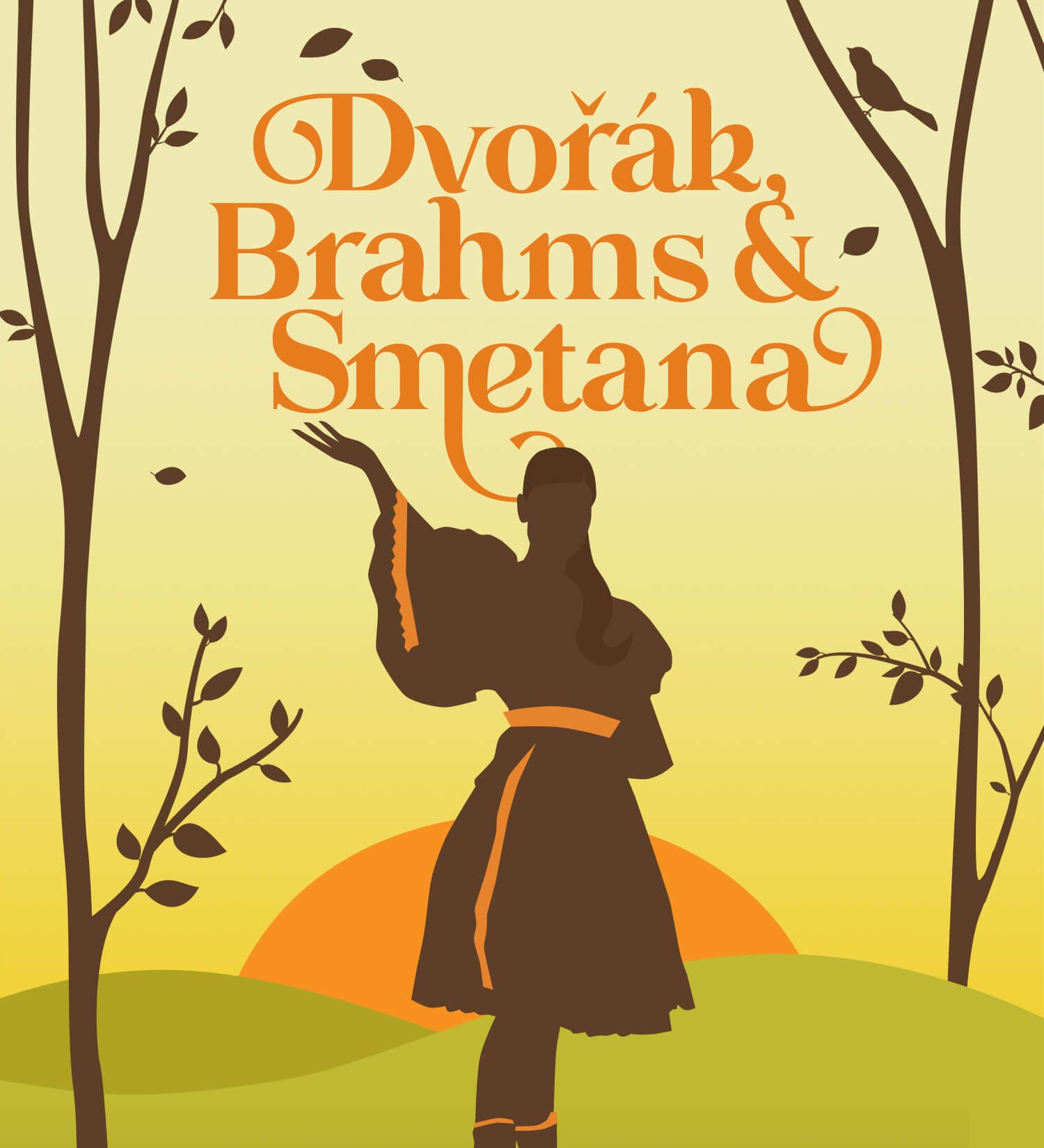
Notes on Dvořák, Brahms and Smetana
I write these notes on these three composers as I sit in one of my favorite Jugendstil-era coffee houses in Vienna, Cafe Goldegg. It is never lost on me the impact that this city has had on the history of music, as these three pieces directly and indirectly show.
It is worth remembering that for a good chunk of the 18th, all of the 19th, and the beginning of the 20th centuries Vienna — not London, not Paris, not Berlin — was the epicenter of culture, politics, philosophy, and economics in Central Europe. Prague and Budapest were mere satellites in the orbit of the Habsburg/Holy Roman Empire/Austro-Hungarian capital, but they both have a very special relationship to the musical heartbeat of Vienna that this concert explores and celebrates.
The great Austrian conductor and cellist Nikolaus Harnoncourt perfectly captures the influence of Czech music and musicians on Vienna. He noted, “when I joined the Vienna orchestra in the fifties, the mother tongue of sixty per cent of the musicians was Czech. When we travelled to Czechoslovakia with the orchestra, Czech was spoken in the orchestra from the moment that we crossed the border. And when we played Smetana’s Má vlast, half the orchestra was in tears. It was incredibly moving, all these men with tears streaming down their faces — I, too, feel something of this emotion — I don’t want to call it sentimentality.”
The music of Bedřich Smetana is an example of the nationalist seeds that were beginning to be sown in the hinterlands in the middle of the 19th century. Premiered in 1866 his second opera, The Bartered Bride (in Czech — Prodaná nevěsta) or, The Sold Bride, was his first attempt at creating an entirely Czech-infused musical vision. One of the characteristics of the music of both Dvorak and Smetana is its rhythmic vitality. Both composers infused their symphonic music with the rhythms of the furiant and the polka, popular Czech folk dances of the day, and Smetana’s overture is a great example!
Antonín Dvořák’s Symphony No. 8, premiered in 1890, carries on the tradition of celebrating the Czech rhythms and dances that Smetana had so successfully integrated a half-generation before, but in Dvořák’s Symphony No. 8, we hear something all-together more universal and human in its message and content. This symphony has traditionally been labeled as having the most sunny disposition of his later works, but as maestro Harnoncourt is quoted above, there is also a longing bordering on sentimentality that is embedded in the music that cannot be escaped, even in the most beautiful moments.
Words and images that spring to mind when I think of Brahms’s Piano Concerto No. 2: epic; monumental; hewn from granite; scaling an Alpine peak…get the picture? I often describe it as another symphony that Brahms wrote that has a really hard piano part rather than his second piano concerto. What I hear is a great master writing music befitting a great city, something that could only be written in a place like Vienna.
And while this might very well be a concerto that is more like a symphony that any other, it is still considered one of the most virtuosic and difficult concertos ever written for the piano and not every world-class pianist attempts to even learn it! I would also like to point out that not every great composer is necessarily a world-class soloist, yet Brahms, who lived for most of his life in Vienna, was the soloist for the premiere, which took place in Budapest in 1881. Like a typical symphony, and unlike a typical concerto, it has four movements and often the main musical ideas are first heard in the orchestra, not with the piano.
These three pieces essentially give us two perspectives, one from within, and two from without, of an empire that would quickly become too big to fail.
